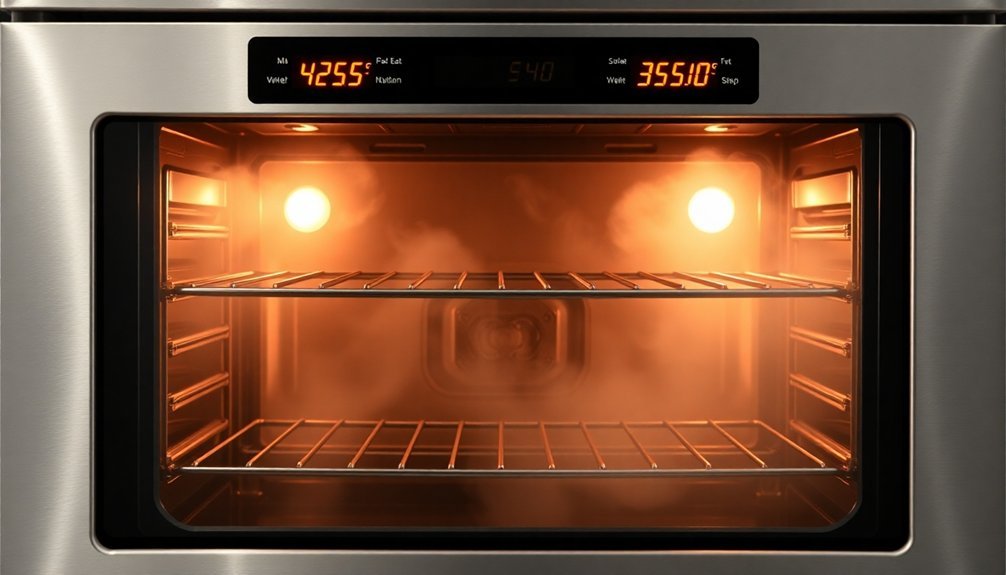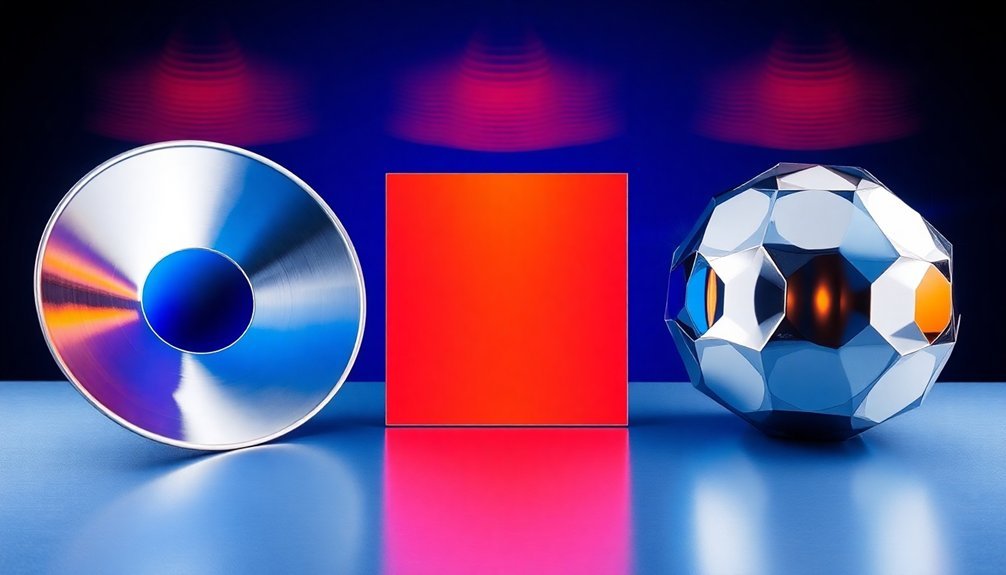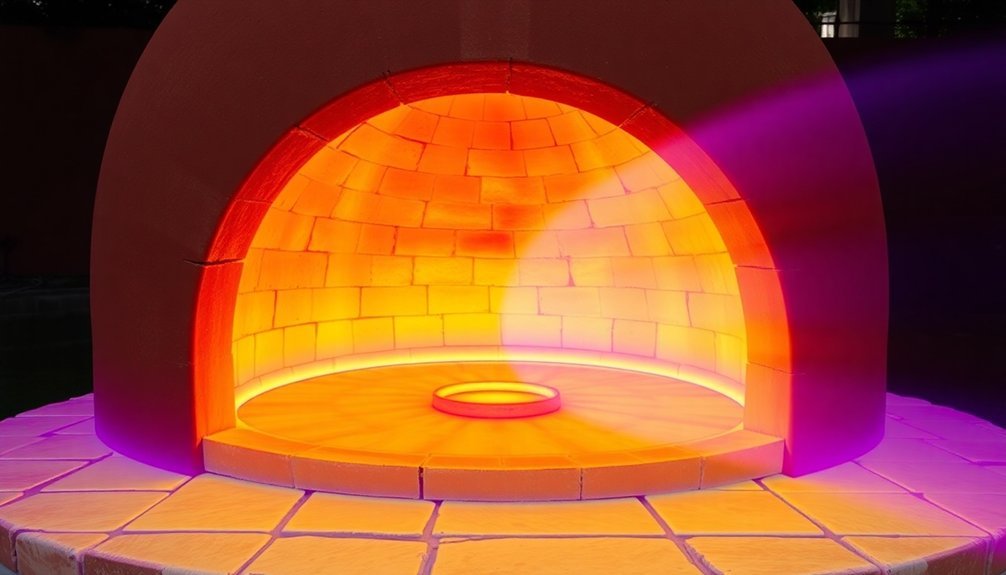For ideal dual chamber oven preheating, you'll want to focus on three proven methods. First, implement a closed-loop PID control system with temperature probes to maintain precise settings in both chambers. Second, utilize sequential preheating by activating the primary chamber first, followed by the secondary chamber once initial temperatures stabilize. Third, take advantage of digital controllers with dual-zone capabilities to guarantee even heat distribution and temperature consistency across compartments. Setting proper hysteresis bands and monitoring through dual-color displays will help you achieve professional-grade results. There's much more to perfecting your dual chamber preheating technique.
Direct Sunlight Chamber Setup

When setting up a sun oven's direct sunlight chamber, proper placement and alignment are essential for peak performance.
Start by positioning your oven in an area free from shadows cast by trees or buildings. Remove the protective film from the reflectors, unsnap the webbing strap, and unfold them carefully. You'll need to secure the reflectors by sliding the bottom section over the thumbscrew with a quarter turn. For proper initial cleaning, heat two cups of soapy water inside the oven for 90-120 minutes.
To achieve optimal alignment, point the front toward the sun until shadows disappear on both sides. Use the E-Z Sun-track indicators to center the light dot over the bottom hole.
Don't forget to adjust the rear leg height to maintain proper positioning. You'll want to refocus every 30 minutes for maximum temperature, or aim the oven where the sun will be strongest between 10 AM and 2 PM.
Chamber Temperature Control Methods
Moving from solar alignment to indoor temperature management, effective chamber temperature control begins with understanding the available control methods.
You'll find that closed-loop systems offer superior precision over open-loop controls by continuously monitoring chamber temperatures and adjusting accordingly.
For dual chambers, you'll want to implement either PID control or advanced digital controllers to manage different temperature zones effectively.
These systems use temperature probes and feedback loops to maintain precise settings in each chamber.
You can fine-tune your control by adjusting PID parameters or setting specific hysteresis bands for ON/OFF control mechanisms.
Don't forget to utilize protection setpoints to prevent overheating, and consider incorporating programmable features for timed operations.
Regular monitoring of temperature is enhanced by dual-color displays that instantly show normal operations in green and alarm states in red, helping you quickly identify issues.
When using convection settings, you'll need to adjust fan speeds appropriately for each chamber's requirements.
Sequential Solar Chamber Preheating

Since solar ovens require careful setup for ideal performance, sequential chamber preheating follows a systematic approach to maximize heat absorption and retention.
You'll need to position the primary solar collector with a black absorber plate and adjust the reflector to capture both direct and diffuse radiation. Solar radiation intensity should exceed 600 W/m² for optimal preheating conditions.
You'll achieve peak preheating by first ensuring the double-glazed windows are clean to allow maximum solar penetration. The black surface at the bottom of your chamber will act as a heat sink, while the fiberglass insulation prevents heat loss.
To boost efficiency, you can adjust the reflector flap throughout the day, tracking the sun's position. The continuous preheating process depends on maintaining proper insulation and maximizing solar exposure through strategic positioning of your oven's components.
Frequently Asked Questions
Can Different Recipes Be Cooked Simultaneously in Separate Chambers?
Yes, you can cook different recipes simultaneously in separate chambers. Each chamber works independently, allowing you to use various cooking methods, temperatures, and humidity levels without flavor transfer between compartments.
How Does Power Consumption Compare Between Single and Dual Chamber Ovens?
You'll use more power when running both chambers in a dual oven versus a single oven. However, you can save energy by using just the smaller chamber for daily cooking or both for large meals.
Do Both Chambers Need Cleaning at the Same Frequency?
You'll need to clean each chamber based on its individual usage – not necessarily at the same frequency. If you use one chamber more often, it'll require more frequent cleaning than the less-used chamber.
What Happens if One Chamber Malfunctions – Will Both Stop Working?
No, if one chamber malfunctions, you'll usually still be able to use the other chamber since they operate independently. However, if there's an issue with shared components like electrical systems, both might stop working.
Are Dual Chamber Ovens More Prone to Temperature Fluctuations?
No, you'll find dual chamber ovens are actually less prone to temperature fluctuations. Their independent control systems and enhanced temperature monitoring help maintain more stable temperatures than single chamber ovens typically offer.
In Summary
You'll find these three dual chamber preheating methods revolutionize your oven's efficiency. By mastering direct sunlight setup, precise temperature control, and sequential solar preheating, you're well-equipped to maximize your oven's performance. Whether you're baking delicate pastries or roasting hearty meals, these techniques guarantee even heat distribution and ideal results. Put these methods into practice, and you'll notice the difference in your cooking immediately.





Leave a Reply